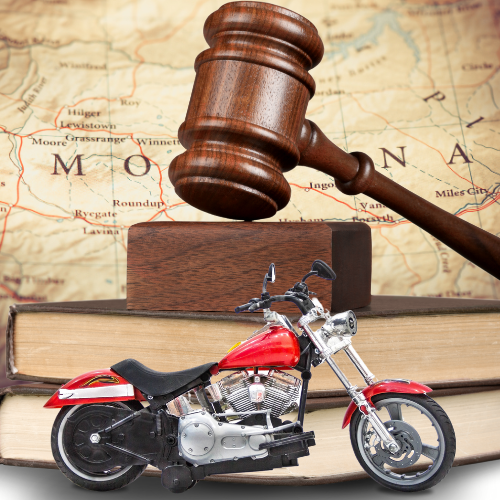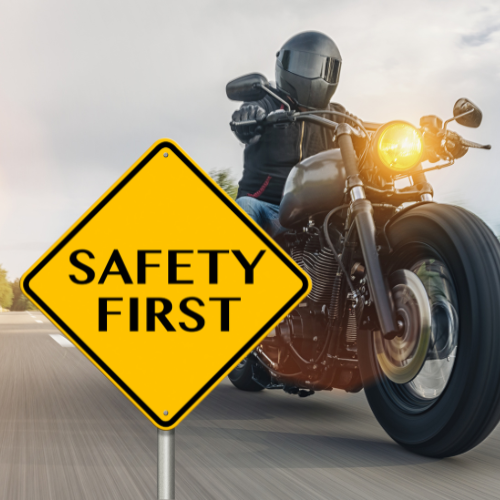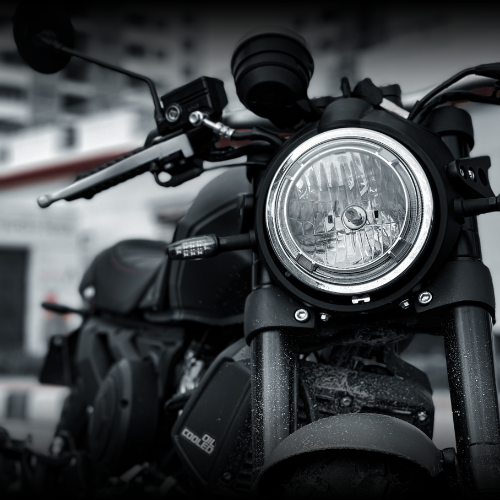Montana Motorcycle Laws

Montana motorcycle laws shape the riding experience for thousands of enthusiasts exploring the state’s stunning landscapes on two wheels
With Montana leading the nation in motorcycle registrations per capita—boasting 68,421 registered motorcycles as of 2021—it’s clear that two-wheeled adventures are a way of life here
But before you hit the open road under the Big Sky, it’s important to understand Montana’s motorcycle laws and safety requirements
Whether you’re cruising through Miles City or tackling the Beartooth Highway, knowing these Montana Laws will help you ride safely and confidently
What Defines a Motorcycle in Montana?

What defines a motorcycle in Montana might surprise you – it’s not just about two wheels and an engine
Montana’s motorcycle laws paint a specific picture of these freedom machines
According to Montana Code Annotated (MCA) 61-1-101(45), a motorcycle is a motor vehicle with no more than three wheels touching the ground, featuring either a saddle for the rider or a standing platform
This definition embraces traditional bikes and three-wheeled trikes, allowing for attachments and even a passenger seat
Montana law also classifies motorcycles as motor vehicles under (MCA) 61-1-101(45)(b), placing them in the same category as cars when it comes to road regulations
As you plan your next ride, you will want to ensure you are compliant with state regulations
Ensuring Compliance: Registering Your Motorcycle in Montana

Ensuring compliance with state regulations starts with registering your motorcycle with the Montana Motor Vehicle Division (MVD)
MCA 61-3-301(1)(a) mandates motorcycle registration for all residents operating their bikes on public highways and further states that the motorcycle must have must have a single license plate displayed on the rear of the vehicle, which may be displayed horizontally or vertically if available space does not permit horizontal display
MCA 61-3-303(1) mandates a Montana resident who owns a motor vehicle (includes motorcycles) operated on public highways to register it in the county where the owner is domiciled. This statute further details that owners must register their vehicles with the county treasurer or an authorized agent
MCA 61-3-321 establishes that all street-legal motorcycles and quadricycles domiciled in Montana must be registered permanently
- What We Know So Far:
- Montana law defines what constitutes a motorcycle
- Motorcycles driven on Montana roads are classified as motor vehicles
- All motor vehicles, including motorcycles, must be registered
- Motorcycle owners must register their bikes in their county of residence
- Registration takes place at the county treasury office in the owner’s county
- Street-legal motorcycles are permanently registered
- A license plate must be attached horizontally to the rear of the motorcycle
The Financial Cost of Compliance

The financial cost of compliance incorporates a flat fee as well as other fees directed exclusively to those registering their motorcycle and dependent on the type of use
- MCA § 61-3-321(8)(a) sets the following one-time “flat fees” for motorcycle registration:
- $53.25 for motorcycles used on public highways
- $53.25 for off-road only motorcycles
- $114.50 for dual-use motorcycles (on-road and off-road)
- In addition to this flat fee, there are other required fees:
- Motorcycle Safety Fee: $16.00
- Montana Highway Patrol Salary and Retention Fee: $10.00
- Plate Manufacturing Fee: $12.00
Total Cost
- Motorcycles used on public highways:
- Flat Fee: $53.25
- Motorcycle Safety Fee: $16.00
- Montana Highway Patrol Salary and Retention Fee: $10.00
- Plate Manufacturing Fee: $12.00
- Total: $91.25
- Note: MCA 61-3-537 allows counties to impose a local option tax, which is up to 0.7% of the retail value of the vehicle
- Off-Highway Only Motorcycles:
- Flat Fee: $53.25
- Motorcycle Safety Fee: (OHV Exemption)
- Montana Highway Patrol Salary and Retention Fee: $10.00
- Plate Manufacturing Fee: (OHV Exemption)
- Total: $63.25
- Note: MCA 61-3-537 allows counties to impose a local option tax, which is up to 0.7% of the retail value of the vehicle
- Dual-Use Motorcycles:
- Flat Fee: $114.50
- Motorcycle Safety Fee: $16.00
- Montana Highway Patrol Salary and Retention Fee: $10.00
- Plate Manufacturing Fee: $12.00
- Total: $152.50
- Note: MCA 61-3-537 allows counties to impose a local option tax, which is up to 0.7% of the retail value of the vehicle
What is the OHV Exemption?

Montana’s Off-Highway Vehicle (OHV) Exemption allows you to ride your motorcycle on private property without registering it or attaching a license plate
However, if you plan to ride on public property—such as public lands, trails, or easements—you must register your motorcycle and display a decal as proof of registration
- Here’s how Montana law defines and regulates OHVs:
- MCA 23-2-801 defines an Off-Highway Vehicle as a self-propelled vehicle used for recreation or cross-country travel on public lands, trails, easements, lakes, rivers, or streams. This definition excludes vehicles designed primarily for water travel and snowmobiles
- MCA 23-2-804 states that motorcycles used exclusively off-road do not require registration or a license plate. However, if you operate your OHV on public property, you must display a decal as proof of paid registration fees
- MCA 23-2-802 outlines specific exemptions from these requirements
- To illustrate how this works, consider the following scenario:
- If you ride your motorcycle only on private land, like your own ranch or property, you don’t need to register it.
- If you plan to explore public trails or parks in Montana, you must comply with registration requirements and display the appropriate decal
Age and Knowledge Requirements

Montana law establishes specific age and knowledge requirements for operating motorcycles legally in the state
Age Requirements
- MCA 61-5-105 sets the minimum age for motorcycle operation:
- 16 years old, or
- 15 years old if the rider has passed a driver’s education course approved by the Montana Department of Justice and the Superintendent of Public Instruction
Licensing Requirements
- MCA 61-5-102 mandates that Montana residents must have a valid Montana driver’s license to operate a motor vehicle, including motorcycles, on state highways.
- This license must have a “motorcycle endorsement” clearly marked to be valid for motorcycle operation.
- MCA 61-5-106 provides that after the applicant has successfully passed the knowledge test and the vision examination the department may issue a learner license which is valid for 1 year.
- A person holding a motorcycle learner license may operate a motorcycle on public highways under specific conditions:
- The rider must not carry passengers.
- The rider must have the permit in their immediate possession.
- The rider must be under the immediate and proximate visual supervision of a licensed driver with a motorcycle endorsement
Motorcycle Endorsement Process
- MCA 61-5-110 outlines the requirements for obtaining a motorcycle endorsement:
- Pass an examination that tests:
- Eyesight
- Knowledge of highway signs and Montana traffic laws
- Ability to safely operate a motorcycle through a skills test
- Exemptions from the knowledge test, road test, or skills test may be granted under certain circumstances, such as completion of approved safety courses
- Pass an examination that tests:
Note: Motorcycle endorsements expire at the same time as your existing MT driver license.
You must renew your license six months prior to, or within 1 year after, the expiration date on your license to avoid retesting
The Knowledge Test
To obtain a motorcycle endorsement in Montana, you must pass a knowledge test administered at examination stations across the state
You can schedule your test at your local Montana Motor Vehicle Division office or visit their website to find a station near you
- The test evaluates your understanding of:
- Pre-ride inspection
- Motorcycle controls
- Riding techniques
- Defensive driving
- Traffic laws
- The dangers of alcohol and drug use while riding
It consists of 25 multiple-choice questions specifically designed for motorcycle riders, and you must answer at least 20 correctly (80% passing score)
The material comes from the Montana Motorcycle Supplement, last revised in 2015
To prepare, use the free 2025 Montana Motorcycle Practice Test provided by the DMV HERE
The Skills Test

The skills test measures your ability to control a motorcycle and respond to hazards
The skills test includes four riding exercises, with two requiring speeds of about 15 mph.
Weather permitting, the test is offered from April to November and will not be conducted on wet roads
- During the skills test, you will perform maneuvers such as:
- Cone weave and normal stop
- Turning from a stop and U-turn
- Quick stop
- Obstacle swerve
If you complete a Montana-approved Motorcycle Safety Foundation (MSF) Basic Rider Course, you may waive the skills test by presenting your MSF card
Testing Locations and Alternatives
MCA § 61-5-110 specifies that knowledge, road, and skills tests are typically administered by the Montana Department of Justice through its Motor Vehicle Division
- However, alternative options include:
- Certified cooperative driver testing programs, such as state-approved high school traffic education courses found HERE
- Waiving the skills test by completing an MSF Basic Rider Course approved by Montana
Montana Motorcycle Safety Foundation – Basic Rider Course

MCA 20-25-Part 10 establishes the Montana Motorcycle Safety Training Program
- The program offers three courses:
- Basic RiderCourse (BRC)
- Two-day course, and both days run from 8:00 a.m.—5:00 p.m.
- Designed for beginning riders
- Cost; $175
- Basic RiderCourse 2 (BRC2)
- One day course from 8:00 a.m.—5:00 p.m.
- For riders who already have basic skills and want to refresh their riding abilities
- Cost: $80
- Advanced RiderCourse (ARC)
- One-day course from 8:00 a.m.—5:00 p.m.
- For experienced riders looking to improve their skills further
- Cost: $80
- Basic RiderCourse (BRC)
For all courses, you may register online, download a registration form and mail it in, or by calling 1-800-922-2453
- NOTE: You are not required to take an MMRS training course.
- If you pass a MMRS Basic Rider Course or a Basic Rider Course 2, the Department of Motor Vehicles (DMV) will waive the state skills test
- You would only be required to take the Montana state knowledge test
- Upon completion of your written test the motorcycle endorsement will be added to your license for a fee
Motorcycle Equipment Laws

MCA Title 61, Chapter 9 addresses equipment requirements for motorcycles
- Notable provisions are below:
- MCA 61-9-203 covers headlamp requirements, stating that motorcycles must be equipped with at least one headlamp
- MCA 61-9-204 addresses taillamp requirements, mandating that motorcycles have at least one taillamp emitting a red light visible from 500 feet to the rear
- MCA 61-9-206 requires motorcycles to have at least one stop lamp visible from 300 feet in normal sunlight for vehicles manufactured after 1964, or 100 feet for those manufactured before 1964
- MCA 61-9-418 establishes noise suppression and spark arrester requirements for motorcycles in Montana. The intent is to ensure that motorcycles comply with noise regulations and reduce the risk of starting wildfires on public lands.
Protective Gear Requirements
Montana is one of 28 states that have age-dependent helmet laws. Only three (3) states (Illinois, Iowa, and New Hampshire) have no motorcycle helmet laws at all.
- MCA 61-9-417 specifically covers the helmet requirement for minors mandating that:
- Operators and passengers under 18 years of age must wear protective headgear that meets standards established by the Department of Justice
- Motorcycle operators cannot carry passengers under 18 who are not in compliance with the helmet requirement
- According to the Montana Administrative Rule 23.3.417 The Montana Department of Justice adopted both the American National Standards Institute ANSI Standard 290.1-1971 and FMVSS 218 (49 C.F.R. § 571.218), including subsequent amendments
- These Standards outline requirements for helmet design, construction, and performance to ensure adequate protection during impacts
- Copies of ANSI Standard 290.1-1971 are not freely available online but can be requested directly from the Division of Motor Vehicles, Department of Justice, located at 303 Roberts, Helena, Montana 59620
Note: Safety experts strongly recommend wearing additional protective gear
Operational Requirements

Montana law establishes specific operational requirements for motorcycles
- Here are two that may be of interest to you:
- MCA 61-8-359(6) and (7) state that no more than two motorcycles may be operated side by side in a single traffic lane
- MCA 61-8-392 legalizes lane filtering in Montana as of October 1, 2021. It defines lane filtering as “the act of overtaking and passing another vehicle that is stopped or traveling at a speed not in excess of 10 miles an hour”
Insurance Requirements

We already know that motorcycles are considered motor vehicles for the purpose of driving on Montana highways
- We also know:
- MCA 61-6-301 addresses the liability insurance requirement for motor vehicles in Montana. This statute makes it unlawful to operate a motor vehicle on public roads without a valid and continuous policy of liability insurance.
- MCA 61-6-103 specifies the minimum liability insurance requirements which are:
- $25,000 for bodily injury or death of one person in an accident
- $50,000 for bodily injury or death of two or more persons in an accident
- $20,000 for property damage in an accident
- MCA 61-6-303(5) explicitly exempts motorcycles from mandatory liability insurance requirements.
- I don’t have the slightest clue why this came to be because riders are still financially responsible for any damages they cause in an accident
Optional Insurance Coverage
While not legally required, motorcycle insurance is still highly recommended
Riders can be held financially responsible for damages they cause in accidents, which can be substantial
Consider This
- If optional coverage is provided it must meet the minimum levels required by Montana law as previously noted. Additional optional coverages like collision, comprehensive, and accessory coverages are available
- If a motorcyclist does choose to purchase insurance, Montana law requires that Uninsured Motorist Coverage be offered at the same limits as the liability coverage. However, riders can reject this coverage in writing
- Financial Responsibility: Even though insurance isn’t mandatory, motorcyclists may still need to demonstrate financial responsibility if involved in an accident. This could involve paying out of pocket for damages or injuries caused and legal expenses are not cheap
- Riders should be aware that while Montana doesn’t require motorcycle insurance, other states may have different requirements. It’s advisable to check insurance laws when traveling across state lines
The Final Mile: Summing Up Montana’s Motorcycle Laws

If you’re planning to ride a motorcycle in Montana, you’ll want to get familiar with the state’s laws and regulations
Motorcycles are considered motor vehicles in the State of Montana and need to be registered
To ride, you’ll need to meet Montana’s age and licensing requirements, which involve passing both knowledge and skills tests, or you can skip the skills test by completing an approved safety course
Montana has rules about motorcycle equipment, like headlights and noise suppression devices, and helmets are required for anyone under 18
On the road, you can ride two abreast in a lane, and lane filtering is allowed under certain conditions
While Montana doesn’t require liability insurance for motorcycles, it’s a good idea to get some to protect yourself financially
Plus, keep in mind that other states may have different insurance requirements, so it’s worth checking those laws if you’re planning a cross-state trip
Overall, these laws help you ride safely and confidently through Montana’s beautiful landscapes on two wheels
Armor Insurance Agency

If you liked this article you can find more HERE
Ready to ride with confidence?
Call: (406) 416-1096
We are an equal opportunity provider


Leave a Reply